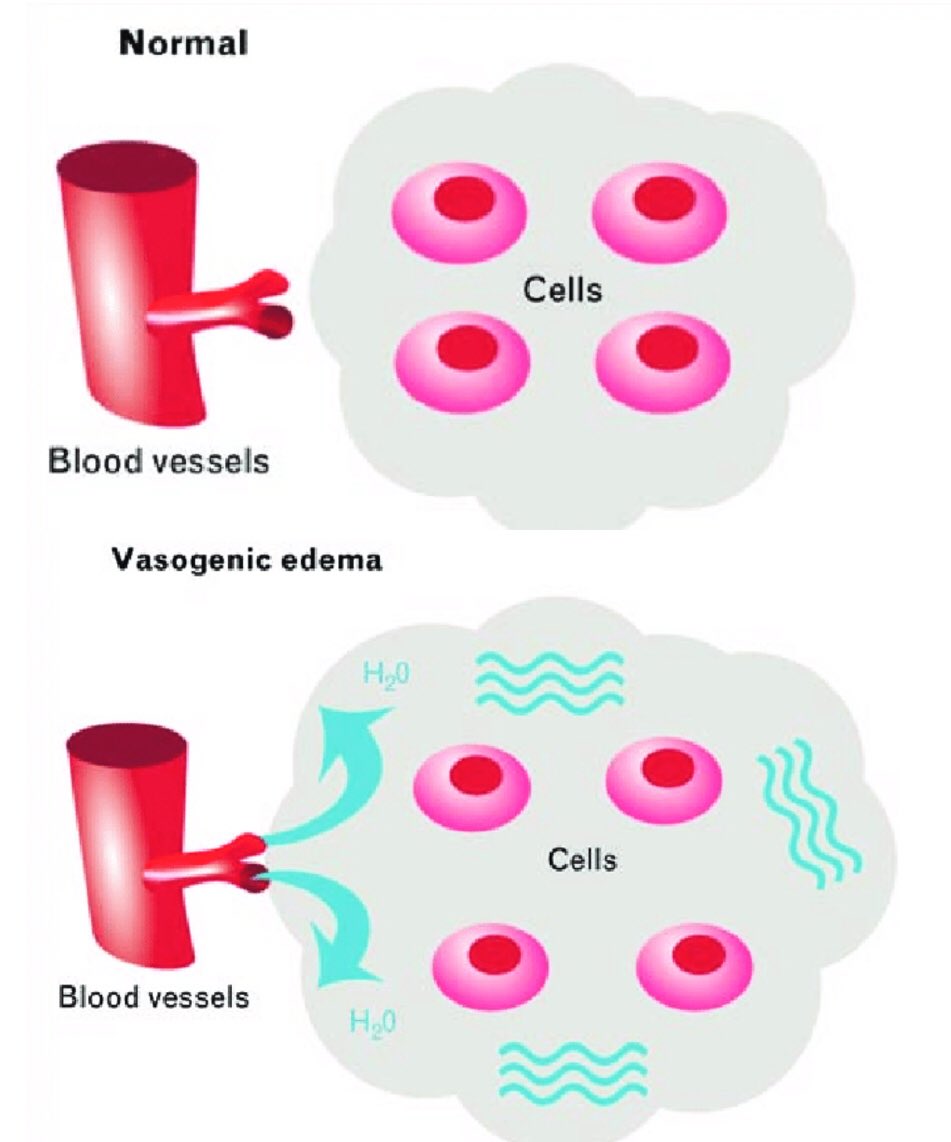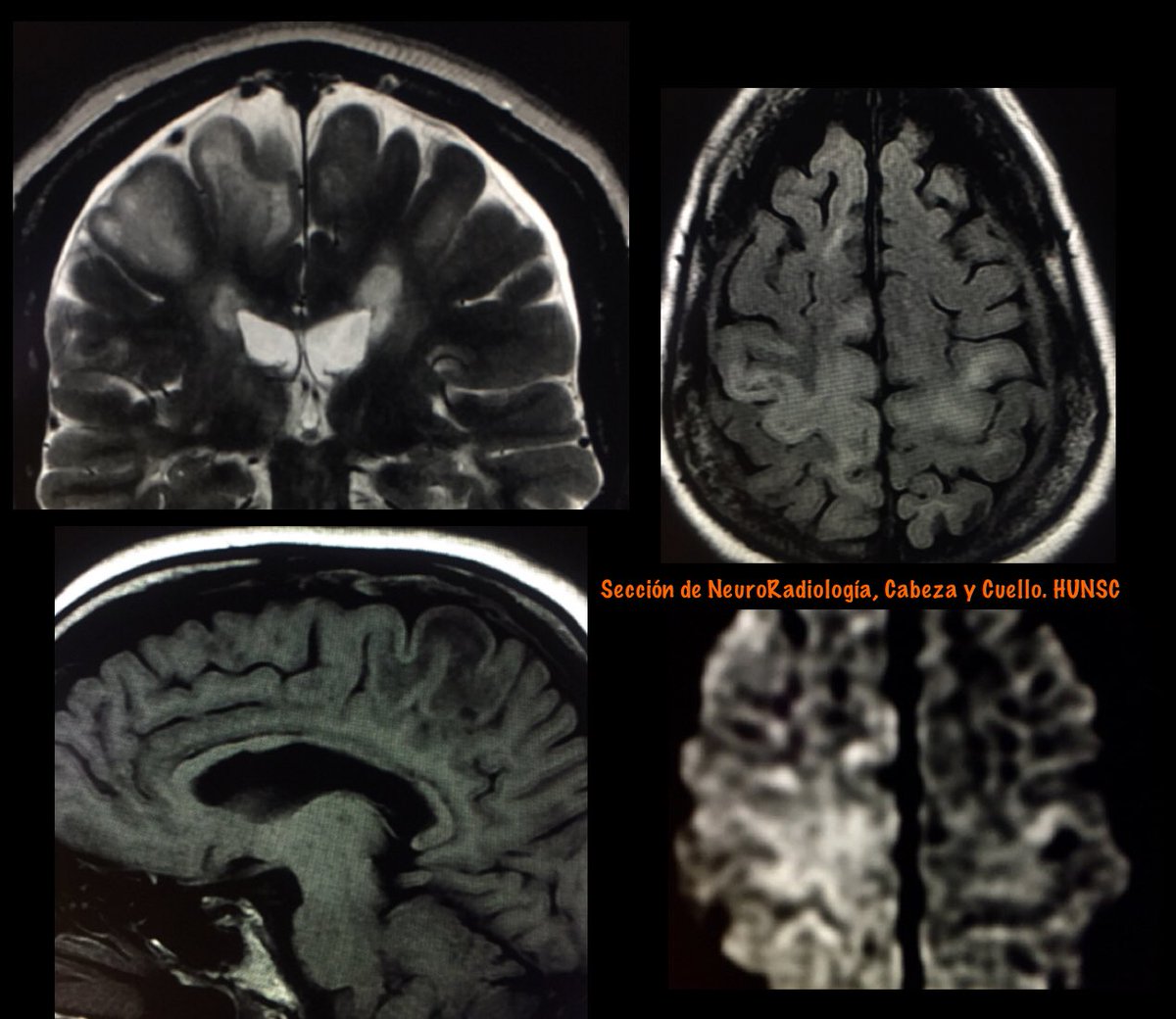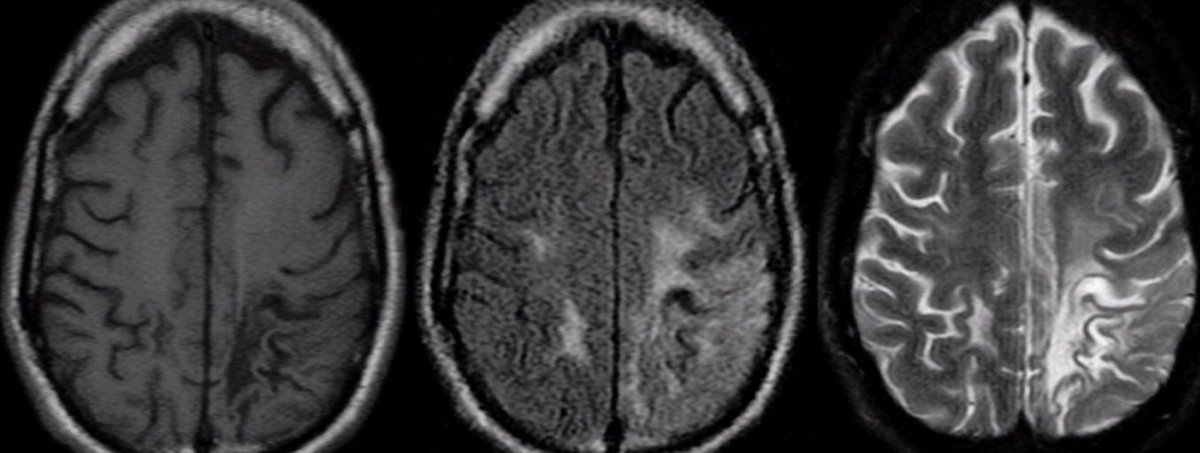
#FOAMrad #neurorad #HUNSC #daybydaycases
Two patients with a similar clinical profile: elderly men with prostatic adenocarcinoma.
Similar neuroimaging pattern: dural base lesion with intense enhancement and vasogenic edema.
But with different etiology .....
Two patients with a similar clinical profile: elderly men with prostatic adenocarcinoma.
Similar neuroimaging pattern: dural base lesion with intense enhancement and vasogenic edema.
But with different etiology .....

A: Meningioma
B: Dural metastases (DM)
DM in isolation is rare, comprising <1% of all intracranial metastases, and most commonly originates from renal, lung, and breast cancer, as well as carcinoid, adenoid cystic carcinoma, prostatic adenocarcinoma (PCa), and dermatofibrosarcoma
B: Dural metastases (DM)
DM in isolation is rare, comprising <1% of all intracranial metastases, and most commonly originates from renal, lung, and breast cancer, as well as carcinoid, adenoid cystic carcinoma, prostatic adenocarcinoma (PCa), and dermatofibrosarcoma

Transdural metastases may mimick meningiomas in radiologic imaging, especially in patients with undiagnosed symptoms of prostatism or PCa.
In older men with dural lesion(s), a possibility of PCa metastases must be considered and radiologic evaluation
In older men with dural lesion(s), a possibility of PCa metastases must be considered and radiologic evaluation

CNS Involvement in Non-CNS Tumors
F. Barkhof et al. (eds.), Clinical Neuroradiology,
doi.org/10.1007/978-3-…
Brain metastases
NATURE REVIEWS | DISEASE PRIMERS | (2019)
doi.org/10.1038/ s41572-018-0055-y
polradiol.com/fulltxt.php?IC…
F. Barkhof et al. (eds.), Clinical Neuroradiology,
doi.org/10.1007/978-3-…
Brain metastases
NATURE REVIEWS | DISEASE PRIMERS | (2019)
doi.org/10.1038/ s41572-018-0055-y
polradiol.com/fulltxt.php?IC…
• • •
Missing some Tweet in this thread? You can try to
force a refresh


















